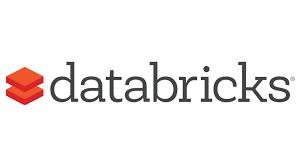Moving to the Cloud
By Ciaran Kirk, Operations Director, IMGS
In today’s changing world, work practices have changed forever, and on-premise systems are proving expensive to maintain while not providing the level of access and performance needed.
Moving to the cloud is not a new concept, and where previously it was a nice tech option, it is very quickly becoming the only solution available to organisations, who want to:
1. Decrease infrastructure capital and operating expenditure
2. Provide true resilience for continuity and disaster recovery purposes
3. Provide elastic scale to handle peaks in demand
4. Query large datasets which have outgrown on premise data storage
5. Take advantage of the latest AI and Machine Language analytics to gain rapid insight
If we take each one of these points in turn, we can see why moving to the cloud is a key part of any digital transformation:
Decrease infrastructure capital and operating expenditure
By moving your systems to the cloud, you are removing the need to have on premise servers thereby decreasing your systems administration overhead. This can be a significant cost saving, if done correctly and at the right time.
One option is to look at IAAS – Infrastructure as a Service – where you migrate your servers to cloud providers such as Amazon EC2 or Microsoft Azure. In this case the cloud provider is providing the infrastructure and will ensure your servers are physically up and running.


In the case of IAAS, your IT support team must still maintain the system running on the server, so it doesn’t completely remove the need for IT systems support.
If the aim is to remove or greatly decrease systems administration overhead as well as the infrastructure costs, then SAAS (Software as a Service) is the perfect model. With the SAAS model the supplier handles the infrastructure and the software system and support so that the end user has little or no overhead in running the system.
In IMGS we have long been users of Office 365, and as someone who remembers when we used to have the headache of running our own exchange servers, Office 365 has been fantastic and provides access anywhere and is always available.
One of the big advantages of SAAS solutions, is the pay as you use model. With this model, customers don’t have to make a large capital expenditure up front for a software solution. This makes it easier in future to switch solutions if required and avoid a legacy IT trap where customers can’t afford to switch off platforms.
In IMGS again we have experience of this, when recently we moved from Salesforce to Zoho. We were able to switch seamlessly and migrate from one system to other in 2 days with no downtime or outages – if these solutions were on premise this would have been a lot more expensive to do.
Provide true resilience for continuity and disaster recovery purposes
One huge advantage for moving to the cloud is in providing true resilience and disaster recovery options. With cloud systems, you can select to have cloned systems in different regions to make sure that if there is a major outage, your organisation can continue to operate.
By selecting high availability options, you can ensure your users are never offline no matter where they are in the world. With the increase in remote working, having systems that are not dependent on a single site or broadband connection is critical.
Provide elastic scale to handle peaks in demand
The real power of the cloud is the ability of cloud systems to scale quickly to meet increased demand. With on premise systems providing scalability can be very costly, as hardware needs to be purchased in advance and will sit idle when demand is low. With cloud you can scale up and only pay for what is needed.
With Serverless technology, cloud providers are bringing this scalability and availability to a new paradigm. Serverless allows organisations to build and run high availability applications and services, without worrying about provisioning, maintaining, and administering servers.
Query large datasets which have outgrown on premise data storage
A big driver to the cloud is the explosion of data growth. Putting it simply, large organisations do not have the capacity to store all this Big Data on premise and the cloud is now providing the only real option. Cloud providers can provide a wide variety of ways to store your data whether in low cost file storage such as Amazon S3 to data warehouses like Snowflake.
A big concern for users is Data Residency and where this data is stored. In Ireland we are very lucky with most of the cloud providers providing data centers in Ireland so we can ensure our data stays within Ireland and the EU to meet GDPR regulations. Also, with modern integration tools like Talend we can also take a hybrid approach and store sensitive data on premise and in a variety of best of breed cloud locations, so as not impact end users.
Take advantage of the latest AI and Machine Language analytics to gain rapid insight
The final reason to move to the cloud is to take advantage of the powerful machine learning and AI services that are available as cloud services and can deliver rapid insights in areas such as predictive maintenance and customer churn.
All the major cloud providers provide these capabilities, (for example Amazon SageMaker) as well specialist SAAS providers such as Databricks provide data science and analysis capabilities that on-premise systems just can’t match.

Summary
As I said at the beginning the cloud is not new and a lot of what I have discussed here is pretty obvious, but I do feel organisations haven’t fully embraced the cloud and I hope this blog might help your organisation begin their digital transformation by moving to the cloud.
If you would like to learn more about moving to the cloud please attend our upcoming moving to the cloud webinar where we will demonstrate using our Data Intelligence Platform how you can migrate to and take full advantage of the cloud:



